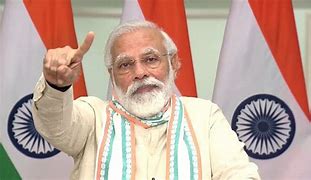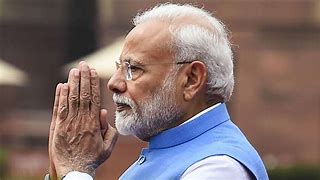Feature
India, Qatar ink six agreements during Emir’s visit

New Delhi: India and Qatar inked six agreements, including one on transfer of sentenced prisoners, as visiting Emir of Qatar Tamim Bin Hamad Al Thani held talks with Prime Minister Narendra Modi here on Wednesday.
The Emir, who is here on a two-day visit, was in the morning accorded a ceremonial reception at the forecourt of Rashtrapati Bhavan. External Affairs Minister Sushma Swaraj called on him, after which he held talks with Prime Minister Modi at Hyderabad House.
The six agreements, besides transfer of sentenced prisoners, are: an MoU for Cooperation in the field of Information and Communication Technology; an MoU between the ministry of earth sciences and Qatar Meteorological Department for Scientific and Technical cooperation; an MoU between Diplomatic Institute of the Ministry of Foreign Affairs, Qatar and Foreign Service Institute of the ministry of external affairs; an MoU for cooperation in the field of Radio and Television; and an agreement for Mutual Cooperation and Exchange of News.
External affairs ministry spokesperson Syed Akbaruddin tweeted: “Opening new doors for investment. Minister @SushmaSwaraj meets Emir of Qatar.”
Under the agreement on transfer of sentenced prisoners, Indian prisoners convicted in Qatar can be repatriated to India to serve the remaining part of their sentence. Similarly Qatari citizens convicted in India can be sent to their home country to serve their sentence. This agreement would enable the sentenced persons to be near their families and would help in the process of their social rehabilitation, said an official statement.
The Qatar emir is accompanied by a high-level delegation comprising ministers, senior officials and captains of industry.
The former Emir of Qatar, Sheikh Hamad Bin Khalifa Al Thani, had visited India thrice: in 1999, in 2005 and in 2012. Former prime minister Manmohan Singh had visited Qatar in November 2008.
Around 600,000 Indian nationals work in Qatar, comprising the largest expatriate community in Qatar. Qatar is also the largest source of India’s LNG imports, at 86 percent. Bilateral trade stands at $16 billion, heavily weighted in favour of Qatar due to India’s LNG imports.
Entertainment
Meghalaya Reserves Legalized Gambling and Sports Betting for Tourists

The State Scores Extra High on Gaming-Friendly Industry Index
Meghalaya scored 92.85 out of 100 possible points in a Gaming Industry Index and proved to be India’s most gaming-friendly state following its recent profound legislation changes over the field allowing land-based and online gaming, including games of chance, under a licensing regime.
The index by the UK India Business Council (UKIBC) uses a scale of 0 to 100 to measure the level of legalisation on gambling and betting achieved by a state based on the scores over a set of seven different games – lottery, horse racing, betting on sports, poker, rummy, casino and fantasy sports
Starting from February last year, Meghalaya became the third state in India’s northeast to legalise gambling and betting after Sikkim and Nagaland. After consultations with the UKIBC, the state proceeded with the adoption of the Meghalaya Regulation of Gaming Act, 2021 and the nullification of the Meghalaya Prevention of Gambling Act, 1970. Subsequently in December, the Meghalaya Regulation of Gaming Rules, 2021 were notified and came into force.
All for the Tourists
The move to legalise and license various forms of offline and online betting and gambling in Meghalaya is aimed at boosting tourism and creating jobs, and altogether raising taxation revenues for the northeastern state. At the same time, the opportunities to bet and gamble legally will be reserved only for tourists and visitors.
“We came out with a Gaming Act and subsequently framed the Regulation of Gaming Rules, 2021. The government will accordingly issue licenses to operate games of skill and chance, both online and offline,” said James P. K. Sangma, Meghalaya State Law and Taxation Minister speaking in the capital city of Shillong. “But the legalized gambling and gaming will only be for tourists and not residents of Meghalaya,” he continued.
To be allowed to play, tourists and people visiting the state for work or business purposes will have to prove their non-resident status by presenting appropriate documents, in a process similar to a bank KYC (Know Your Customer) procedure.
Meghalaya Reaches Out to a Vast Market
With 140 millions of people in India estimated to bet regularly on sports, and a total of 370 million desi bettors around prominent sporting events, as per data from one of the latest reports by Esse N Videri, Meghalaya is set to reach out and take a piece of a vast market.
Estimates on the financial value of India’s sports betting market, combined across all types of offline channels and online sports and cricket predictions and betting platforms, speak about amounts between $130 and $150 billion (roughly between ₹9.7 and ₹11.5 lakh crore).
Andhra Pradesh, Telangana and Delhi are shown to deliver the highest number of bettors and Meghalaya can count on substantial tourists flow from their betting circles. The sports betting communities of Karnataka, Maharashtra, Uttar Pradesh and Haryana are also not to be underestimated.
Among the sports, cricket is most popular, registering 68 percent of the total bet count analyzed by Esse N Videri. Football takes second position with 11 percent of the bets, followed by betting on FIFA at 7 percent and on eCricket at 5 percent. The last position in the Top 5 of popular sports for betting in India is taken by tennis with 3 percent of the bet count.
Local Citizens will Still have Their Teer Betting
Meghalaya residents will still be permitted to participate in teer betting over arrow-shooting results. Teer is a traditional method of gambling, somewhat similar to a lottery draw, and held under the rules of the Meghalaya Regulation of the Game of Arrow Shooting and the Sale of Teer Tickets Act, 2018.
Teer includes bettors wagering on the number of arrows that reach the target which is placed about 50 meters away from a team of 20 archers positioned in a semicircle.
The archers shoot volleys of arrows at the target for ten minutes, and players place their bets choosing a number between 0 and 99 trying to guess the last two digits of the number of arrows that successfully pierce the target.
If, for example, the number of hits is 256, anyone who has bet on 56 wins an amount eight times bigger than their wager.























